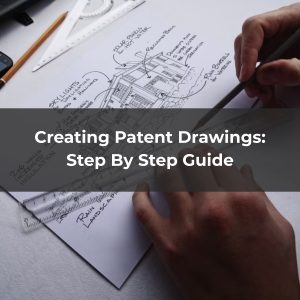A utility patent illustration is one of the most important aspects of a utility patent application. Even long pages of description of the invention may not be enough to elucidate your invention completely. You can use a utility patent illustration as a torch to illuminate and illustrate your invention properly. It is a great way to eliminate any doubts about your invention and it improves the scope of your protection. So it is absolutely necessary to put the hammer on the nail correctly while rendering these illustrations. For that, you must ensure that you follow all the latest guidelines and practices by USPTO.
What’s the Need of a Utility Patent Illustration?
Not only is an illustration a great option for you to use, but also it is a requirement by the USPTO. The applicant for a patent has to furnish a drawing of the invention whenever a drawing would help to understand the invention. Hence, you must include at least one illustration when drafting your patent application.
There are 2 basic tips that you must keep in mind while creating your illustrations.
- Point of Novelty: You must be aware that your invention needs to be novel in order to receive a patent. There can be instances where your invention might overlap with an existing one. This is where drawings can play a game-changing role. You can use your drawing to make it stand out from any prior art. So you must make full use of an illustration.
- Telling a Story: The illustrations should act as a visual story. You may use sequential drawings to explain a process or the making of a product. Either way, the drawing should make it absolutely clear about how your invention looks and functions. If you can successfully tell the story of your invention visually, then your chances of getting a patent will increase a long way.
Let’s see how to make the best utility patent illustration.
Utility Patent Illustration: Guidelines to Follow
There are some vital instructions from The Manual of Patent Examining Procedures that you need to follow:
- Every illustration must be black and white in color and no other color.
- You may use colors only when a part of the invention absolutely requires you to use different colors while explaining. You must also file a separate petition with the USPTO to avail permission for the same.
- Use India ink for all illustrations.
- Create all your illustrations on white A4 matte paper that is flexible and strong. Dimensions are as follows: 21cm x 29.7cm or 21.6cm x 27.9 cm.
- Margins should be as follows:
- 2.5 cm on the top
- 1.5 cm on the right side
- 2.5 cm on the left side
- 1.0 cm on the bottom
- Each illustration must include the invention name, name of the inventor, and application number.
- Ensure that upon rescaling the drawing, it will not be crowded when reproduced at 2/3 size. Don’t write indications of scale-like “1/2” because that will lose its meaning upon rescaling.
- The manual encourages you to use shading. However, avoid solid black shading except on bar graphs or to represent color.
- You can also include charts and diagrams in your illustrations.
- You may use symbols and legends if necessary to describe the invention.
- Use lead lines to redirect the reader from the drawing to the associated symbol in the description.
- Superimposition of drawings should not happen.
- You don’t need an illustration if your patent is about a chemical compound or process.
The USPTO allows you to use photos, but only in exceptional cases. Photographs can prove to be useful in providing intricate details of the invention which might be difficult to draw. Hence, they must be in high definition to depict everything clearly. They must follow the same rules in terms of the type, size, and margins of the drawing.
The views
If your invention is a physical object, you should draw all the views; top, bottom, and all the sides. Wherever applicable, you should include the following views of your invention:
- Six views (front, back, right, left, top, and bottom) for 3D objects and two views (front and back) for 2D objects.
- Three-dimensional perspective views
- Exploded views to represent how each part works during the operation of the invention
- Sectional views to depict the functionality
You can leave out the surfaces which are without ornamentations. As the guidelines stipulate, you should make the most use of shading. It is another essential component of a utility patent illustration. It depicts depth, contour, and texture. You should use dots, lines, and distinctive patterns for this. Check out our sample utility patent illustration to see the quality of our work.
Click Here to Download (Free Samples)
Need a professional illustrator? – Patent Illustration Express
You may feel that the margins for error are too fine and the guidelines are too many. Consequently, rendering your own illustrations may seem like a daunting task. If you feel the need to consult a professional, Patent Illustration Express is here to help you. Our team of professionals boasts years of experience and diverse skill-set of software and handmade drawings. Utility patent illustrations are our specialty. Your satisfaction is paramount to us. We offer an incredibly high turnaround time and unlimited iterations, all at an extremely affordable price.
To make an inquiry, visit the Patent Illustration Express Services
Other Related Articles:
Patent a Process in the US: A Complete Guide



